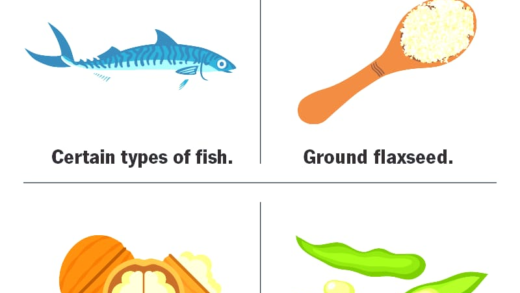Lobsters are fascinating creatures with unique anatomical features, interesting feeding habits, and a significant role in marine ecosystems. Their diet includes marine invertebrates, fish, and plant matter, making them opportunistic feeders. Considered a delicacy, lobsters are prized for their sweet meat and cultural significance in various cuisines. Fun facts about lobsters include their color-changing ability when cooked and their impressive lifespan of up to 50 years.
Lobsters and Their Unique Anatomy
Lobster facts reveal that these fascinating crustaceans possess unique anatomical features that set them apart in the seafood world. Their hard exoskeleton, made primarily of chitin, protects them from predators. Moreover, lobsters have two large claws: one is typically larger and designed for crushing, while the other is smaller and used for cutting. This adaptation allows them to effectively hunt and defend themselves.
Another quirky feature is their pair of compound eyes, which grant them a wide field of vision. They can see in multiple directions at once, helping them spot threats in their surroundings. Additionally, lobsters have antennae that serve multiple purposes, including sensing their environment and communicating with each other.
Overall, lobsters’ unique anatomy not only aids in their survival but also makes them a subject of interest in marine biology.
Why Do Lobsters Pee From Their Faces?
One of the weird lobster facts involves their unusual method of excreting waste. Lobsters actually pee from their faces! This peculiar behavior is linked to their unique anatomy. They have specialized glands located near their eyes that excrete urine, which they use to communicate with other lobsters.
When lobsters urinate, they release pheromones that signal their reproductive status and territory to nearby lobsters. This behavior is crucial for mating and establishing dominance. The face-pee phenomenon might sound odd, but it plays an essential role in their social interactions.
Lobster Communication: How Do They Talk?
Lobsters communicate through a combination of chemical signals and body language. Their primary method involves releasing pheromones into the water, which can convey various messages to other lobsters. For example, these chemical signals can indicate readiness to mate or warn of danger.
In addition to chemical communication, lobsters also use physical gestures. They may display aggressive postures, such as raising their claws, to assert dominance. Their ability to interpret these signals is vital for maintaining social hierarchies within their habitats.
Can Lobsters Feel Pain?
The question of whether lobsters can feel pain has sparked significant debate among scientists. Some studies suggest that lobsters possess a nervous system complex enough to process pain, while others argue that their responses are merely reflexive.
Research indicates that lobsters exhibit behaviors consistent with experiencing discomfort. For instance, when exposed to harmful stimuli, they may attempt to escape or show signs of stress. This has led many to advocate for more humane treatment in the fishing and culinary industries.
In conclusion, understanding lobster sensations is essential for promoting ethical practices in seafood consumption.
Lobster Growth and Molting
Lobster growth is a fascinating process, primarily characterized by molting. Lobsters grow by shedding their hard exoskeletons, a process that allows them to increase in size. This unique feature is vital for their development. During molting, a lobster can grow significantly, sometimes up to 50% of its body size!
Here’s how the molting process works:
- Preparation: Prior to molting, lobsters absorb water, causing their bodies to swell. This expansion helps in breaking the old shell.
- Shedding: The lobster then sheds its exoskeleton. This process can take several hours.
- Hardening: After molting, the new shell is soft, and it takes time to harden. During this vulnerable period, lobsters often hide from predators.
Molting occurs about 25 times in a lobster’s life, becoming less frequent as they age. Understanding this process is essential for anyone interested in lobster aquaculture or fishing.
The Lifespan of a Lobster
Lobsters are known for their impressive lifespan, which can reach up to 50 years in the wild! However, several factors influence their longevity:
- Environmental conditions: Water temperature and quality significantly impact their lifespan. Warmer waters can accelerate their metabolism, leading to shorter lives.
- Predation: Natural predators, such as fish and seals, can reduce a lobster’s lifespan. The ability to hide and molt plays a crucial role in their survival.
- Human activities: Overfishing and habitat destruction can also shorten their lives. Sustainable fishing practices are essential to ensure healthy lobster populations.
Interestingly, lobsters do not age in the traditional sense. They continue to grow throughout their lives, which can lead to larger sizes as they age. This unique trait makes them a subject of interest in biological studies.
Lobster Reproduction
Lobster reproduction is a complex process that involves various stages. Female lobsters can carry fertilized eggs for up to a year before releasing them. Here’s a brief overview of their mating process:
- Attraction: Female lobsters release pheromones to attract males, signaling their readiness to mate.
- Mating: After successful courtship, the male will clasp the female with his claws to ensure mating.
- Egg development: Once fertilized, the female carries the eggs under her tail until they hatch, providing protection and oxygen.
After hatching, the larvae are released into the ocean, where they undergo several molts before settling on the ocean floor. This reproductive strategy ensures the survival of their species in a competitive marine environment.
What Do Lobsters Eat in the Wild?
Lobsters are opportunistic feeders, meaning their diet is quite varied. They primarily consume:
- Marine invertebrates: Lobsters enjoy snacking on crabs, clams, and other shellfish. These provide essential nutrients for their growth and development.
- Fish: Small fish and fish scraps are also on the menu, making lobsters efficient scavengers in their habitats.
- Plant matter: They occasionally eat algae and seaweed, especially when other food sources are scarce.
This diverse diet plays a significant role in the marine ecosystem, as lobsters help control the population of various species. Their feeding habits also contribute to the overall health of the ocean floor. By recycling nutrients, lobsters support the growth of other marine life.
Why Are Lobsters Considered a Delicacy?
Lobsters are considered a delicacy for several reasons. First, their sweet and tender meat is a culinary delight, often sought after in high-end restaurants and seafood markets. The flavor and texture of lobster meat are unique, making it a favorite among seafood lovers.
Additionally, lobsters have a cultural significance in many cuisines, particularly in coastal regions. They are often associated with luxury and special occasions, making them a popular choice for celebrations.
Furthermore, the preparation methods, such as boiling, steaming, or grilling, enhance the natural flavors of lobsters. Many chefs create elaborate dishes featuring lobsters, showcasing their versatility in the kitchen.
Fun and Weird Facts About Lobsters
Finally, here are some fun and weird lobster facts that will amaze you:
- Color-changing: Lobsters can change color when cooked due to a chemical reaction, turning from dark blue or green to bright red.
- Longevity: As mentioned earlier, lobsters can live for decades, with some reaching 50 years or more.
- Size Matters: The largest lobster ever recorded weighed 44 pounds! Imagine the feast that would provide.
- Unique Reproduction: Female lobsters can store sperm for years, allowing them to choose when to fertilize their eggs.
- Brainy Crustaceans: Lobsters have a decentralized nervous system, meaning they have a brain but also nerve centers throughout their bodies that control movement.
These quirky facts highlight the fascinating nature of lobsters and their importance in both marine ecosystems and culinary traditions.





Comments are closed.